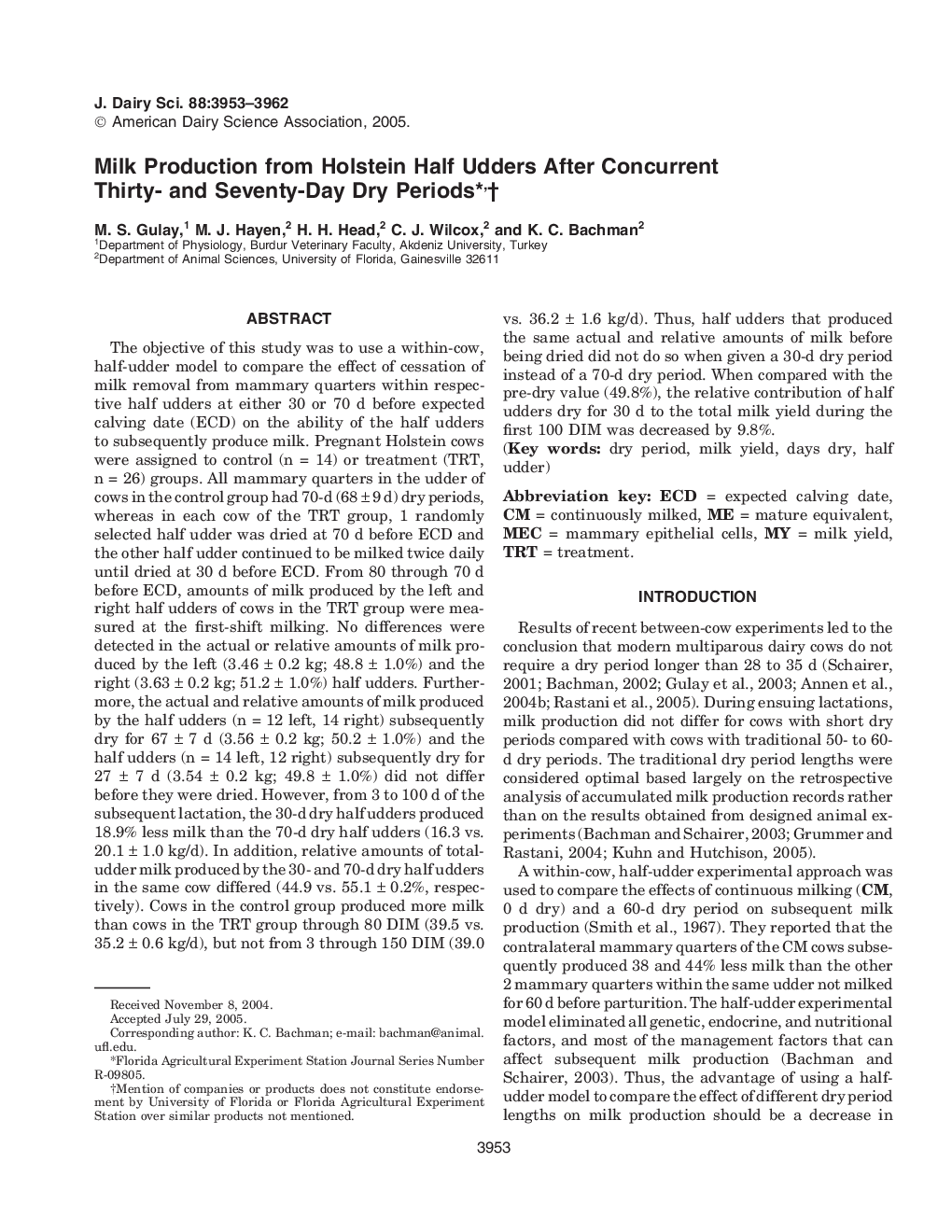| Article ID | Journal | Published Year | Pages | File Type |
|---|---|---|---|---|
| 2441897 | Journal of Dairy Science | 2005 | 10 Pages |
Abstract
The objective of this study was to use a within-cow, half-udder model to compare the effect of cessation of milk removal from mammary quarters within respective half udders at either 30 or 70 d before expected calving date (ECD) on the ability of the half udders to subsequently produce milk. Pregnant Holstein cows were assigned to control (n = 14) or treatment (TRT, n = 26) groups. All mammary quarters in the udder of cows in the control group had 70-d (68 ± 9 d) dry periods, whereas in each cow of the TRT group, 1 randomly selected half udder was dried at 70 d before ECD and the other half udder continued to be milked twice daily until dried at 30 d before ECD. From 80 through 70 d before ECD, amounts of milk produced by the left and right half udders of cows in the TRT group were measured at the first-shift milking. No differences were detected in the actual or relative amounts of milk produced by the left (3.46 ± 0.2 kg; 48.8 ± 1.0%) and the right (3.63 ± 0.2 kg; 51.2 ± 1.0%) half udders. Furthermore, the actual and relative amounts of milk produced by the half udders (n = 12 left, 14 right) subsequently dry for 67 ± 7 d (3.56 ± 0.2 kg; 50.2 ± 1.0%) and the half udders (n = 14 left, 12 right) subsequently dry for 27 ± 7 d (3.54 ± 0.2 kg; 49.8 ± 1.0%) did not differ before they were dried. However, from 3 to 100 d of the subsequent lactation, the 30-d dry half udders produced 18.9% less milk than the 70-d dry half udders (16.3 vs. 20.1 ± 1.0 kg/d). In addition, relative amounts of total-udder milk produced by the 30- and 70-d dry half udders in the same cow differed (44.9 vs. 55.1 ± 0.2%, respectively). Cows in the control group produced more milk than cows in the TRT group through 80 DIM (39.5 vs. 35.2 ± 0.6 kg/d), but not from 3 through 150 DIM (39.0 vs. 36.2 ± 1.6 kg/d). Thus, half udders that produced the same actual and relative amounts of milk before being dried did not do so when given a 30-d dry period instead of a 70-d dry period. When compared with the pre-dry value (49.8%), the relative contribution of half udders dry for 30 d to the total milk yield during the first 100 DIM was decreased by 9.8%.
Related Topics
Life Sciences
Agricultural and Biological Sciences
Animal Science and Zoology
Authors
M.S. Gulay, M.J. Hayen, H.H. Head, C.J. Wilcox, K.C. Bachman,
